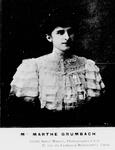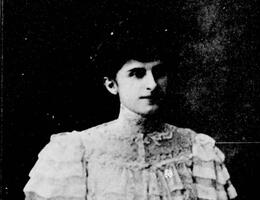
Marthe GRUMBACH
1877 - 1932
Composer
The daughter of a merchant from Alsace, Marthe Grumbach attended the Paris Conservatoire for twenty years, from 1886 to 1906. She focused on theoretical subjects: solfège, then harmony (with Charles Lenepveu), piano accompaniment (with Paul Vidal) and counterpoint and fugue (with Gabriel Fauré). This course of study did not yield any Premier Prix and her participation in the competitive examination for the Prix de Rome for musical composition in 1906 did not gain her any award either. And yet Le Voltaire had singled her out as the favourite on 14 May 1906. On the fringes of the academic world, Marthe Grumbach pursued a career as a teacher – with a piano course that she co-directed with her sister Marie (a pupil of Pugno at the Conservatoire) – and composer. Her output, published from 1902 onwards, initially stuck to the genres usually assigned to women: mélodies, on poems by Pierre Alin or Émile Schmitt; genre pieces for piano; teaching methods (solfège or harmony); duets or choruses for two or three voices on religious texts. Before the First World War, she nevertheless managed to have two mélodies with orchestra performed at the Société Nationale de Musique (Noël in 1908 and Poème d’hiver in 1910). Some of her orchestral works enjoyed a certain vogue in the 1920s, notably Impression matinale and Danses arabes, which were regularly broadcast on the radio. However, she devoted her final works to children, with a series of chansonnettes faciles (easy ditties) for little girls. Little is known about her personal life, except that her death certificate lists her as ‘single’.
Student of

Composer, Organist, Pianist
Gabriel FAURÉ
Useful links
Permalink
publication date : 13/12/23


